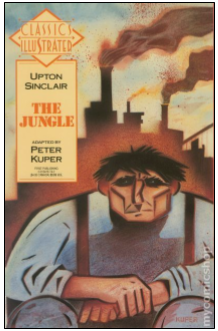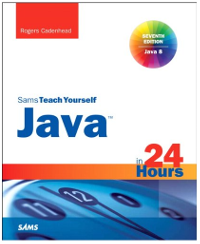M.C. Moewe and the Story That Got Away
You know how on cop shows there's often a veteran detective who can't let go of an unsolved case for years? My wife M.C. Moewe has been like that because of a story she reported that no publication will touch.
She's a former investigative reporter who worked at the Daytona Beach News-Journal, Fort Worth Star-Telegram and other newspapers.
Around a decade ago a big assignment was dropped on her desk: Family courts were giving custody of kids to a parent accused of sexual abuse and denying custody to the parent who alleged abuse -- even when credible evidence and experts raised alarms. Judges were delegating their responsibility to investigate to custody evaluators, experts shielded from legal liability who claimed that the concerned parent suffered from Parental Alienation Syndrome, a discredited psychiatric theory employed to completely dismiss allegations a child is being abused by a parent.
Twice her story was accepted by editors, prepared for publication and then killed right before it saw print.
It's the kind of story that needs a big media organization behind it. She tried several times to get it published, learning more each year about the subject as she heard from desperate mothers who lost custody of their children once they reported concerns about possible abuse. By her count, she now knows 30 women who've suffered this fate. I've heard her take long phone calls with these moms many times, and twice she attended the Battered Mother's Custody Conference. She's become an expert on a subject she never got to report on.
Last month, M.C. decided to tell the story of the scandal in the family courts as a weekly series for Daily Kos. She isn't running the specific story that got spiked, but instead writes about the entire system. The first installment explains her reasoning:
If I couldn't shine a light on a problem as bad as this one, then journalism just didn't fit with me anymore.
So I decided to come here and write what I normally call thumbsuckers –- stories that explain how a system is broken –- about our family court system.
She filed the sixth story in the series today, and it's a huge one: Mandatory reporters who tell the authorities about child abuse, as required by law, are losing their careers for coming forward:
After two preschool children indicated their father was abusing them and one child tested positive for a sexually transmitted disease, a health care professional treating the youngsters followed her state's mandatory reporting law -- but now she's the one in trouble.
"They act like I made it all up," the professional, who agreed to be interviewed on the condition of anonymity, said of her state licensing board. "I have lost business and I'm having trouble getting back into a couple of insurance networks."
She's confident she made the right decision to report the suspected sexual abuse but is baffled why a state agency has joined the alleged abuser in questioning her motives. "Less than five percent of children who report sex abuse are telling lies," said the professional.
Child psychologists and others who work to protect abused children say this is a common scenario -- they report abuse and suffer retaliation when the alleged abuser files a complaint against them. They say the actions taken to punish them by government agencies speak louder than the mandatory child abuse reporting laws.
Within minutes of posting the story, she started hearing from mandatory reporters who fear the consequences of doing the right thing. One said, "After reporting, in Pennsylvania, I hold my breath for a month."
Programming a Confidence Pool for the World Cup

I did some coding yesterday to run a 2014 World Cup confidence pool on SportsFilter. The way a confidence pool works is you assign points to teams based on how confident you are they will win. In this contest, you get point values from 32 down to 1 and assign them to the 32 World Cup teams. The more points you assign a team, the more you are awarded when that team wins or ties a match.
Anyone can sign up for a SportsFilter account and play. A prize will be awarded to the winner: the Adidas replica version of the official World Cup ball. The deadline for entries is shortly before the first match Thursday.
I wrote the web application in PHP, stored the database in MySQL and used the Smarty PHP template engine for the presentation. This was a project I had to complete in a single day, so I didn't think I'd go to the trouble of using Smarty. I figured I would just kludge together some ugly PHP pages that had code and HTML markup mixed together.
But Smarty makes it easier to present the HTML output of a PHP web application. I find that I write better PHP code when I use it and there's less debugging required to get things right.
The way Smarty works is you write a PHP script that does the work such as collecting user input and storing data, make some variables from that script available to Smarty and tell it to load a template file that contains HTML and some simple code to present information.
Here's the last part of the script that displays the contest entry form and validates what the user has submitted:
// make data available to templates
$smarty->assign('spofi', $spofi);
$smarty->assign('page_title', "Enter the SportsFilter World Cup 2014 Confidence Pool");
$smarty->assign('spofi', $spofi);
$smarty->assign('form_output', $form_output);
$smarty->assign('error_message', $error_message);
$smarty->assign('random_team', $random_team);
$smarty->assign('submit_widget', $submit_widget);
// display output
$smarty->display('header.tpl');
$smarty->display('confidence-pool.tpl');
$smarty->display('footer.tpl');
Those three .tpl files are templates. The header and footer contain the SportsFilter layout and the main body of the page is in confidence-pool.tpl.
Here's a portion of that template:
{$error_message}
<p><form action="/confidence-pool.php" method="post">
{$form_output}
<input type="submit" value="Preview My Entry" name="command">
{$submit_widget}
</form>
Smarty's template language can do more than display variables. It has for loops to display every element in an array and formatting functions that can do things such as control how the elements of a date are displayed.
I also used it on Wargames.Com. Here's some template code from the state directory pages:
{foreach from=$stores item=store}
<p class="directorystore">
<span class="directorystorename"><a href="{$store.link}">{$store.name}</a><br /></span>
{if $store.phone neq ''}<span class="directorystorephone">{$store.phone}<br /></span>{/if}
<span class="directorystorelocation">{$store.city}, {$store.statename} {$store.zip}<br /></span>
</p>
{/foreach}
The $stores variable is an array with link, name, phone, city, statename and zip elements.
The ultimate goal of today's project is to make it possible for a website's users to create and run their own confidence pools for any sporting event that lends itself to this type of contest. One sport it would be ideal for is the NFL, with players ranking the teams playing that weekend and competing all season.
Who Would Steal a Honda Odyssey?

I got up this morning to take my son to school and our minivan was missing from the driveway. It had been stolen. I kept pushing the key fob buttons expecting it to magically reappear.
Somewhere in Florida today there is a thief who appreciates the flexible cargo space and peppy car-like handling of the 2012 Honda Odyssey.
Ghost of Computer Author Past
You could tell a lot about an author or conference speaker by tracking the changes made to that person's short bio over the years. Here's how I described myself in 1996 for Java Unleashed, Second Edition, a frankenbook written by 24 authors in the book publishing rush after Java was launched:
Rogers Cadenhead is a web developer, computer programmer and writer who created the multi-user games Czarlords and Super Video Poker. Thousands of readers see his work in the Fort Worth Star-Telegram question-and-answer column "Ask Ed Brice." Rogers has developed Java applets for Tele-Communications Inc. and other clients, and is the coauthor of Teach Yourself SunSoft's Java Workshop in 21 Days. Rogers wrote Chapters 1, 5, 17 and 18 and contributed to Chapter 2.
It didn't take long for me to drop references to Czarlords and Super Video Poker, two online games I created for bulletin board systems. My friend Mark Terrano and I started a company to create multi-user BBS games right before the Web came along and killed the businesses of every potential customer. Our total earnings were $180.
Terrano did a little bit better on his next game venture. He was lead designer of Age of Empires II and is a founder of Hidden Path Entertainment.
Interview with Zoe Zolbrod
A version of this post originally appeared in the May 2013 mailing of the Capa-Alpha APA.
During the early '90s when I took a stab at becoming a comic book writer, I requested submission guidelines from several dozen publishers. One of the people I heard from was First Comics submissions editor Zoe Zolbrod. Her letter of Feb. 5, 1991, shared a new plan the company was undertaking. "First is going to begin to publish black-and-white, limited-series, creator-owned comic books," she wrote. "These would be sent to us by the creator all ready to be shot and printed (scripted, penciled, inked and possibly lettered). ... There would be no page rate for these books; instead the artist(s) would get a predetermined percentage of the profits."
The letter and First's submission guidelines are linked.
After being one of the most successful comics companies to spring up in the '80s, First was fading fast by the time of my letter. After it shut down in 1992, Zolbrod stayed in publishing and has become a book editor, essayist and novelist.
In the late '90s she published the zine Maxine, billed as a "literate companion for churlish girls and rakish women."
Her 2010 debut novel Currency is about a female American backpacker in Thailand who has a romance with a local street hustler that brings her into the world of exotic animal smuggling.
On an impulse, I looked up Zolbrod on the web and she agreed to answer some questions in email about her days at the company.
![]()
Question: It looks like you got the First Comics job right after graduating from Oberlin, based on your LinkedIn profile. How long did you work at First and what was it like to comb through the submission pile? Do you recall any of the writers and artists you discovered whose books went on to be published?
Zolbrod: I got the job as editorial assistant for First Publishing in 1990, a few months after graduating from Oberlin, thanks to a tip passed through the Oberlin grapevine that started with Anina Bennett, who was an editor there. One of the things I did as part of my interview process was to review a couple of unsolicited submissions, because dealing with the slush pile was a big part of the job. I was far from a comics geek. I liked a few alternative things like Hate and Love & Rockets, but I had virtually no familiarity with the world of super heroes, which was a lot of what First published and received as submissions. I remember deciding to just give my honest opinion of the comics I was given to review, including my feminist analysis, because I didn't even know enough to fake something else. I guess the other candidate they were considering had more comics knowledge, but First was mostly looking for someone who could write and think critically, and so they took me on.
I looked at probably hundreds of submissions and dutifully wrote a personal note back to most everyone, which encouraged a couple people to respond a little too enthusiastically. I only found a few things that I thought were worth passing up the chain based on the criteria I was given, and of those, only one did everyone get excited about. I can't remember the name or the artist now, but there was some discussion with the guy about signing him. Little did I know, though, that I had arrived at the beginning of the end of First.
Within a year of having taken the job, the company decided to move from a monthly publishing schedule to a quarterly one, and the ceased signing anyone new. Soon after that, they suspended publication entirely -- actually, Lone Wolf & Cub might have limped on for awhile -- and laid a bunch of people off.
I kept my job -- probably because I was working for peanuts -- but things eventually ground down to a stop. I was there for less than two years, but that job really changed my life. I had gotten a little editorial experience, and I also got a bonus for sticking around until the bitter end. The bonus provided me with a nut of money that allowed me to backpack around Southeast Asia for the better part of the year.
Q: The letter I received was from February 1991 in response to a request for submission guidelines. You described how First was planning to start publishing black-and-white, creator-owned comic books that were submitted in completed form to the company. First would only do the cover and possibly redo the lettering. Was this a last-ditch effort to keep the company in business, and do you recall if anything came of it before it closed?
Zolbrod: Oh, I forgot about that. Now that you mention it, I think that was the criteria I was given for what to pass up the chain. The one submission everyone liked was to be part of it. But no, nothing ever came of it. Things started going downhill fast very soon after I sent that letter.
Q: It looks like the final things First published were Eric Shanower's Blue Witch of Oz, the final issues of Dreadstar, Grimjack, Lone Wolf & Cub, and a Classics Illustrated adaptation of Upton Sinclair's The Jungle by Peter Kuper (I need to find a copy of that). What do you think caused the demise of the company, one of the most successful comic book publishers of the '80s?
 Zolbrod: I believe I recall the Peter Kuper art coming in. I had been aware of him before I started the job and was really impressed. It made working there seem glamorous. There was often quite a buzz when the Classics Illustrated art came in, and we would all gather round, but I didn't work with any of those artists. They had their own team, and I was an underling.
Zolbrod: I believe I recall the Peter Kuper art coming in. I had been aware of him before I started the job and was really impressed. It made working there seem glamorous. There was often quite a buzz when the Classics Illustrated art came in, and we would all gather round, but I didn't work with any of those artists. They had their own team, and I was an underling.
Although I hadn't heard of Grimjack before I started, that was the First series that I genuinely got into. I was sad when it went to a quarterly and then ceased. I wasn't in the know enough to have a really clear picture of what happened, but I recall hearing that the licensing of Teenage Mutant Ninja Turtles had been a huge cash cow for First, and that had ceased by the time I got there in '90. I think the licensing with Classics Illustrated and Lone Wolf might have been expensive, and their own series weren't doing as well as they had been.
Q: You published the novel Currency inspired by your experiences traveling Southeast Asia alone, and now you're working on a memoir about suffering sexual abuse as a child. How did you decide to write about a subject so difficult, and how is it going?
Zolbrod: I'm looking at the memoir as being more about how I interpreted what happened to me as a child at different stages of my life, and less about the actual abuse. It's a situation with a lot of gray area, or at least a lot of psychological gray area to me. I guess I came to writing about it in the hopes of gaining a better understanding, which has eluded me all these years.
Also, I became aware that this issue affects a lot of people in nuanced ways that aren't well represented, and I want to add to the dialogue. I have a strong vision for the book and it's going well, if not quickly.
![]()
To find out more about Zoe Zolbrod's books and read her blog The Next Youth Hostel, visit her website ZoeZolbrod.com. She also is a frequent essayist for the literary site The Nervous Breakdown.
Teach Yourself Java 8 in 24 Hours
 I'm working on author review today for the Java 8 edition of my book Sams Teach Yourself Java in 24 Hours. This is the phase of the project near the finish line where I get all the chapters back as edited Word documents, review the changes recommended by editors and answer any questions they have. I also give each chapter a quick read and make sure the code compiles. (I hate it when a computer book has code that doesn't compile.)
I'm working on author review today for the Java 8 edition of my book Sams Teach Yourself Java in 24 Hours. This is the phase of the project near the finish line where I get all the chapters back as edited Word documents, review the changes recommended by editors and answer any questions they have. I also give each chapter a quick read and make sure the code compiles. (I hate it when a computer book has code that doesn't compile.)
One of the things I like about writing a 24 Hours book is that my publisher, Pearson Education, gives me license to have some fun with the material. Computer books can be as dry as Ben Stein teaching high school economics if you don't liven them up.
I ended chapter 2 with this passage:
During this hour, you got your first chance to create a Java program. You learned that to develop a Java program you need to complete these four basic steps:
1. Write the program with a text editor or a tool such as NetBeans.
2. Compile the program into a class file.
3. Tell the Java Virtual Machine to run the class.
4. Call your mother.
Along the way, you were introduced to some basic computer programming concepts such as compilers, interpreters, blocks, statements, and variables. These will become clearer to you in successive hours. As long as you got the Saluton program to work during this hour, you're ready to proceed.
(The fourth step has nothing to do with Java programming. It's just something my mother suggested I put in the book.)
The book comes out May 23. Supplies are limited to however many we print.
Converting a WordPress Blog to HTML Files

I've been doing more programming lately, primarily in Java because I am writing several books that teach the language. I have a few big announcements coming soon about those projects.
My current coding effort is an application that turns a no-longer-updated WordPress blog into a set of static HTML pages. The goal is to make it easier to retire a blog while keeping the content available in the form that's most likely to be future proof and extremely simple to move around.
WordPress can export a blog's pages, entries and comments to a single XML file. The export file is an RSS feed extended with several namespaces, which the company has dubbed WordPress eXtended RSS (WXR). To create a WXR file of your blog, go to your WordPress dashboard and choose Tools, Export. A page opens with an Export command that creates the file and initiates the download to your computer.
Although the WXR format isn't documented, any programmer who has worked with RSS feeds can figure out the purpose of most elements just by looking at an export file in a text editor.
I could use some guinea pigs, so if you have a WordPress blog and are willing to share its WXR file, I can send a copy back to you as a static web site. Send me an email or comment and we'll arrange how to get the file to me.




